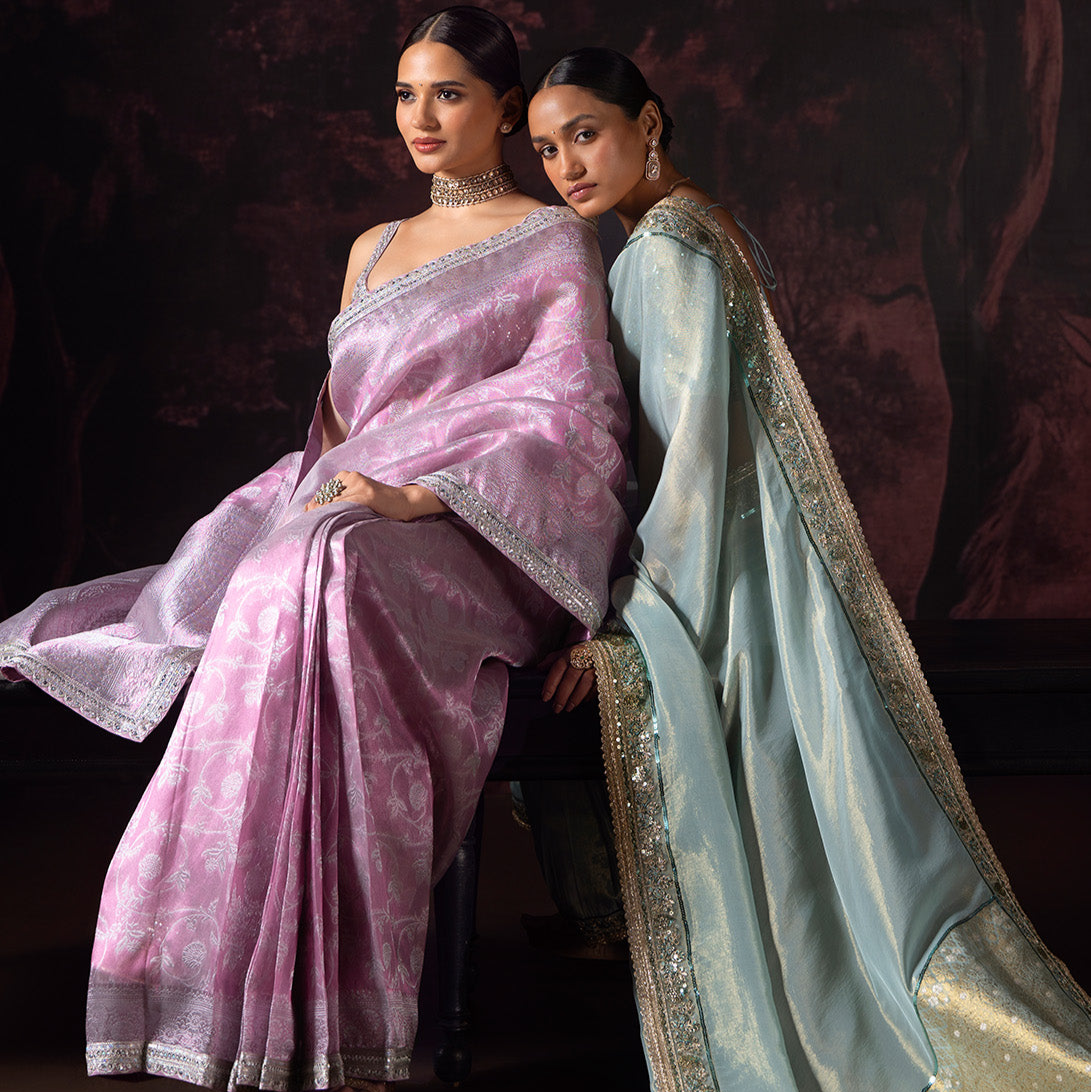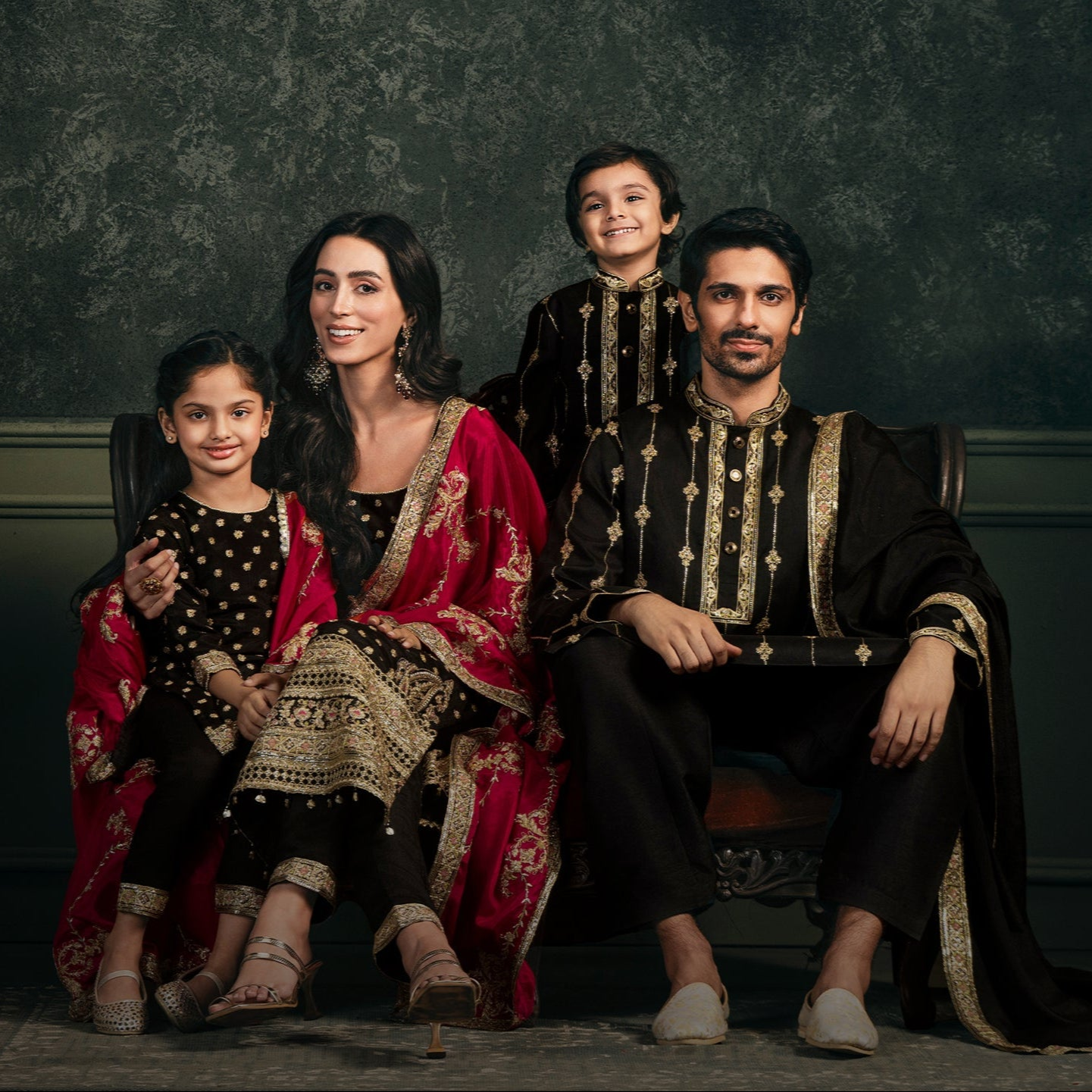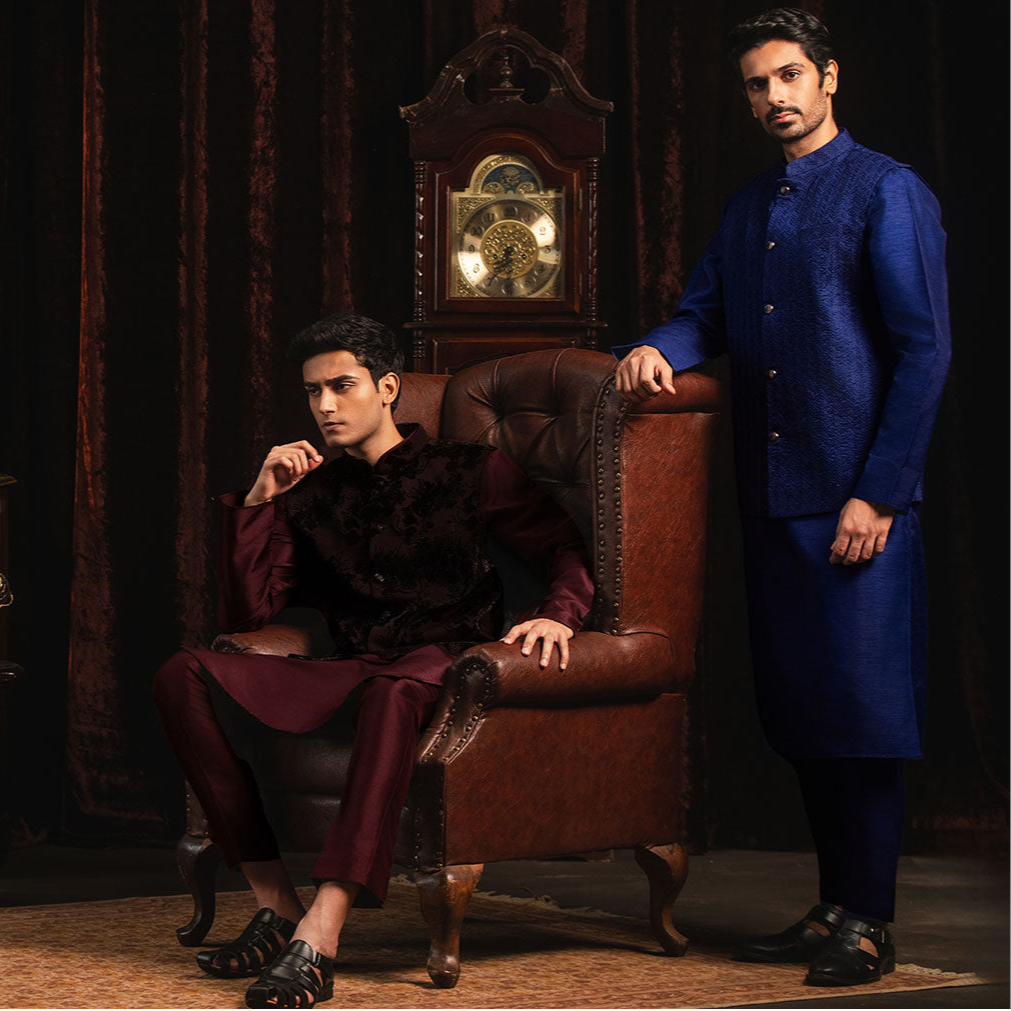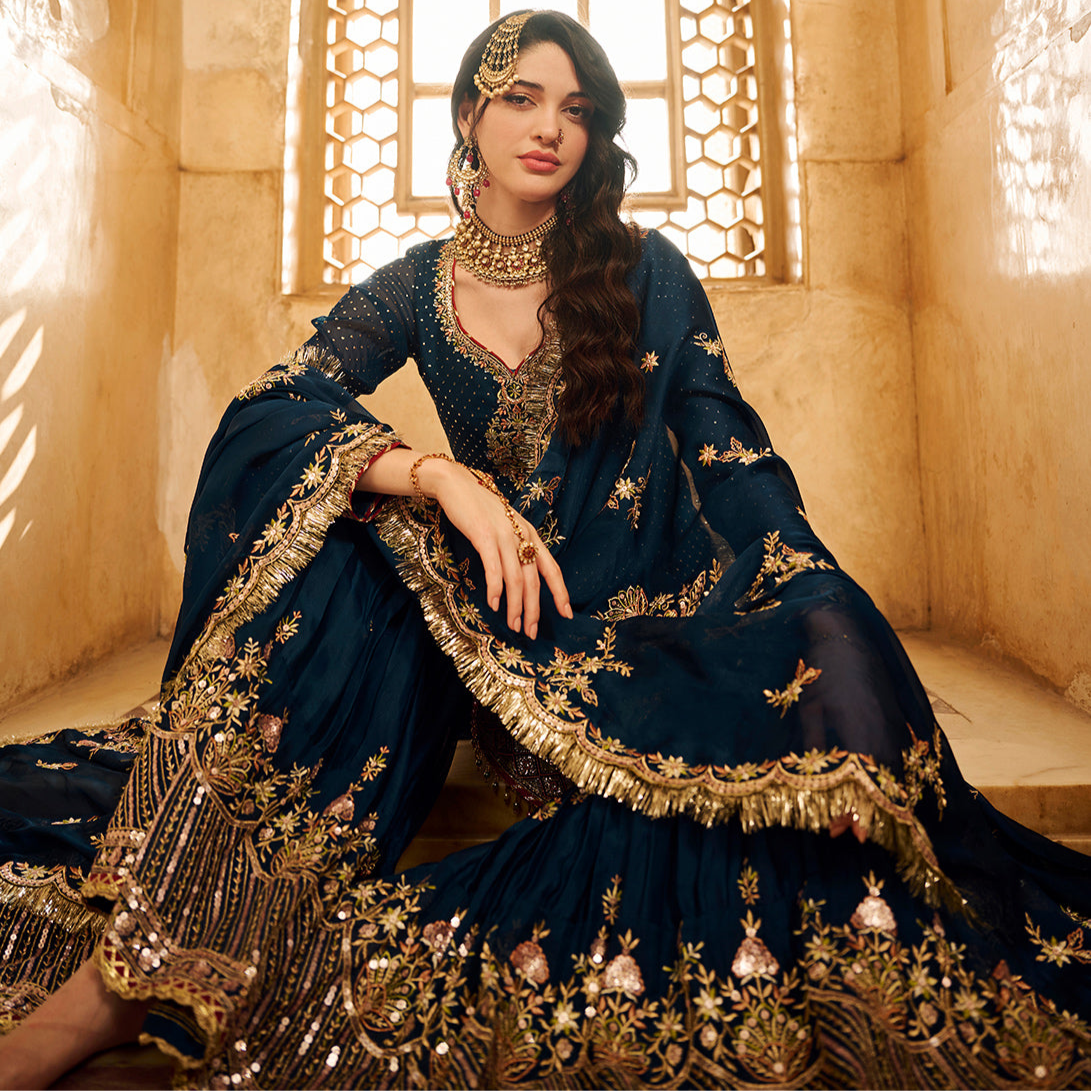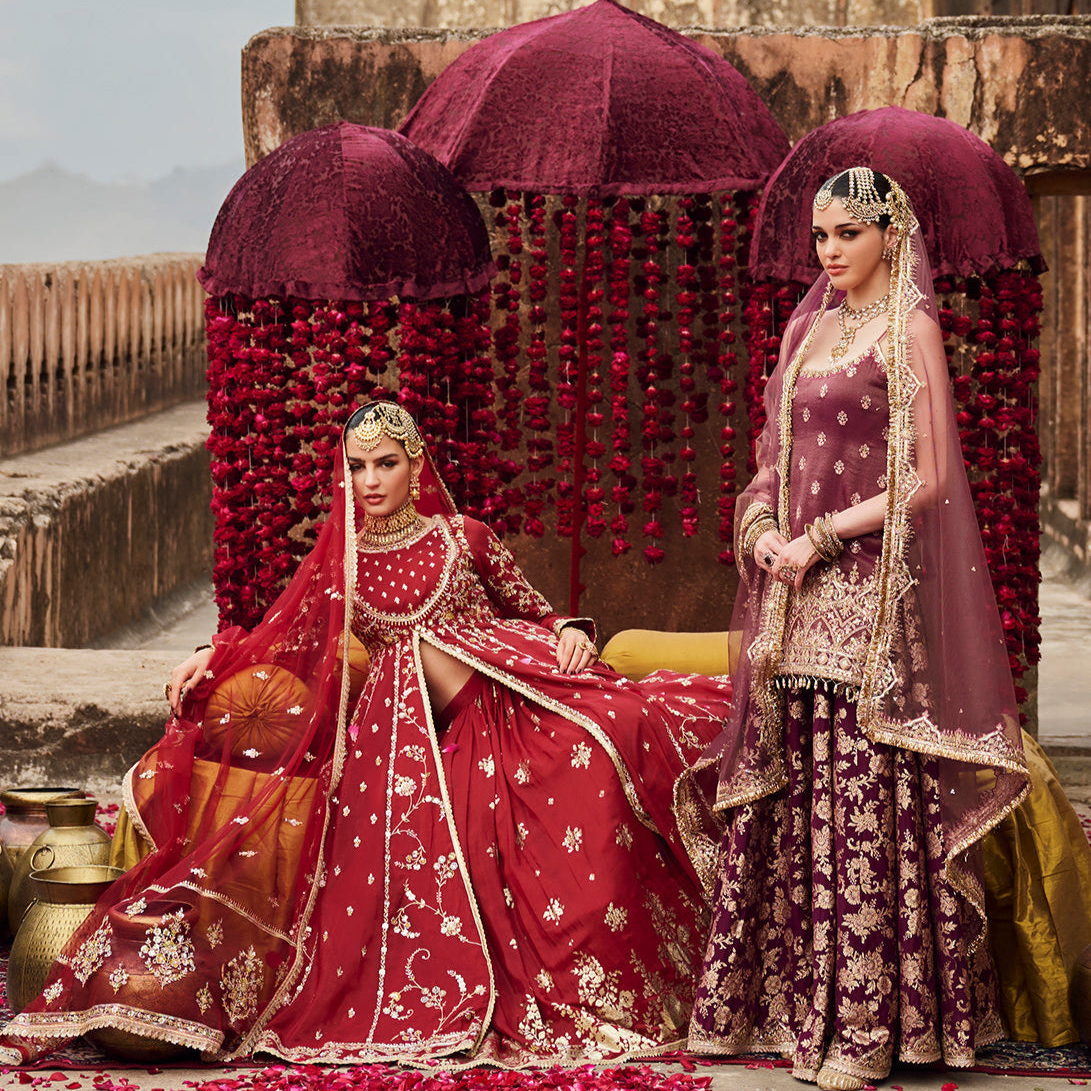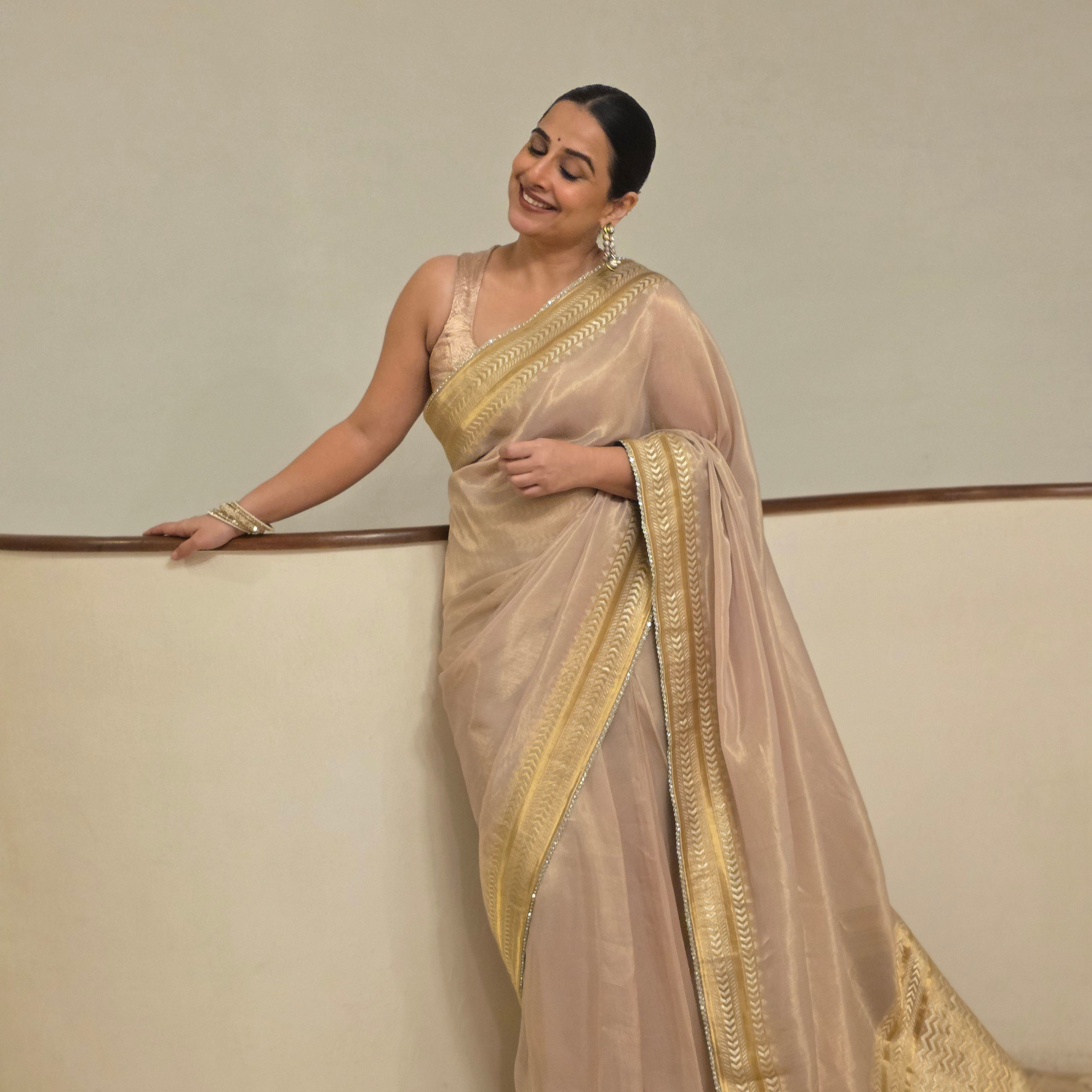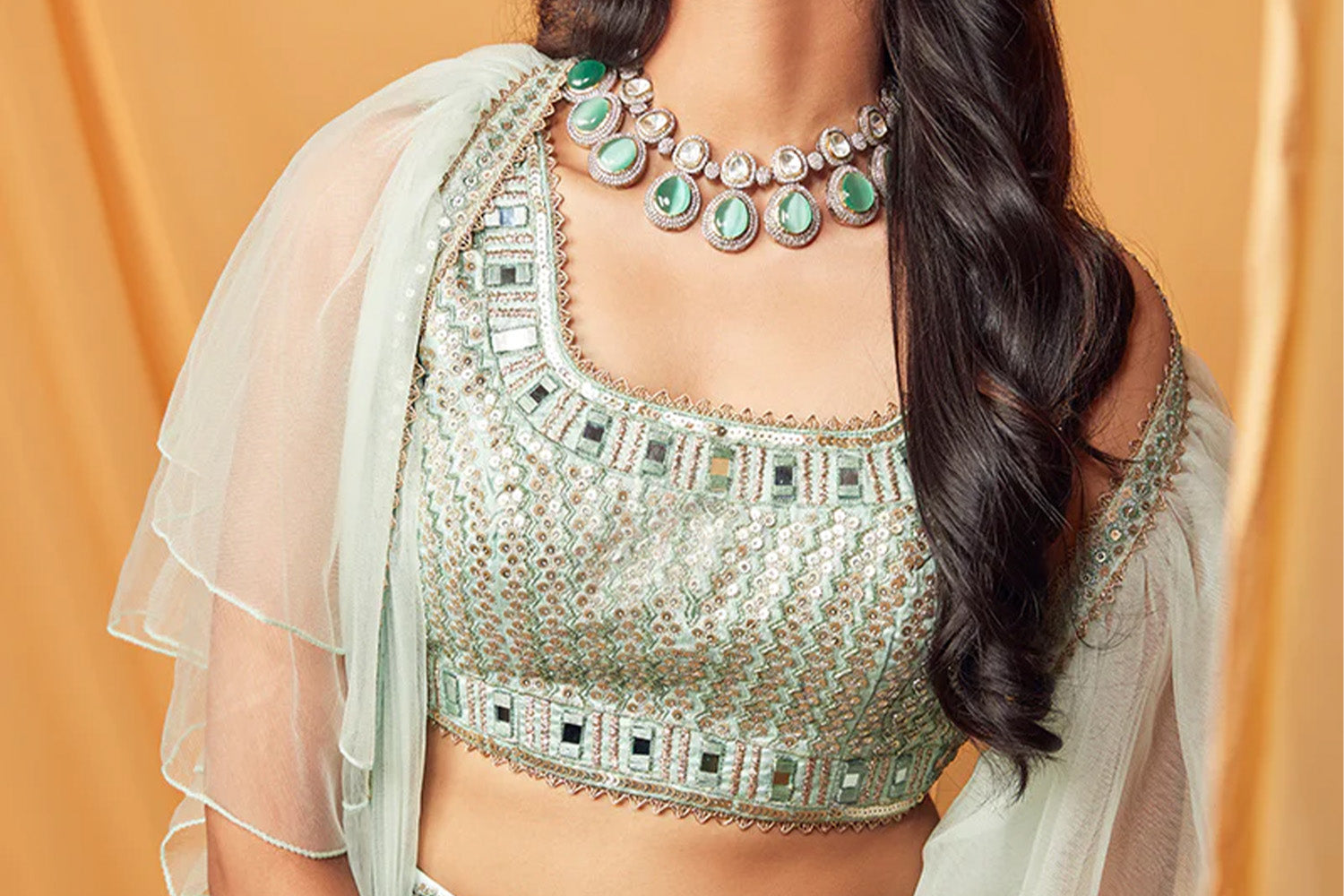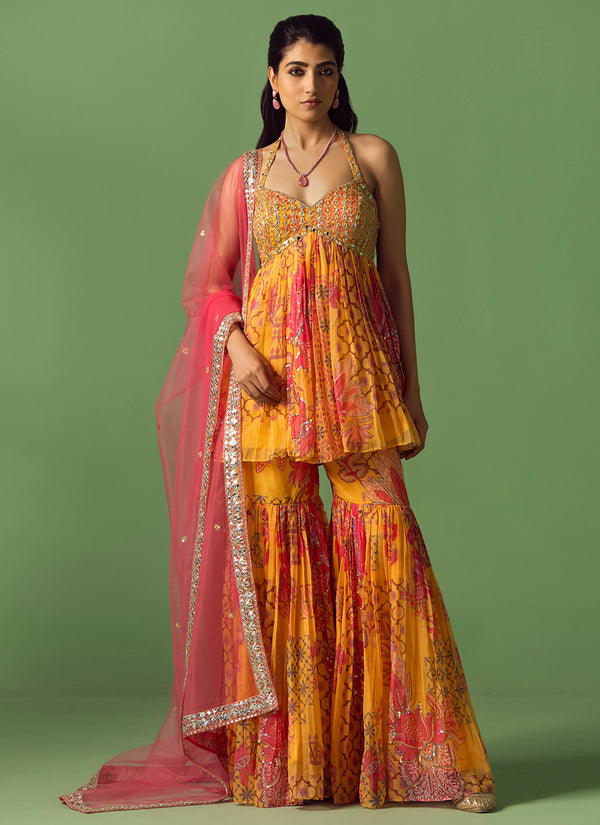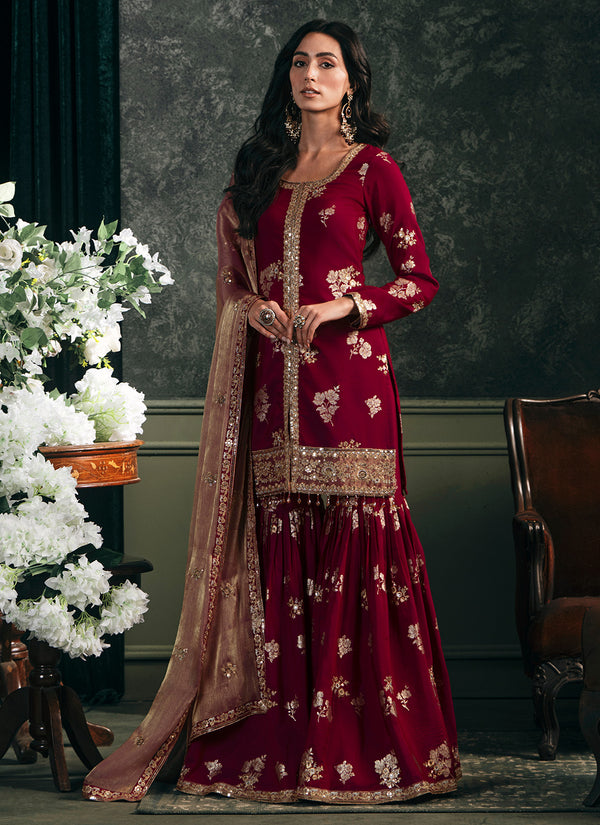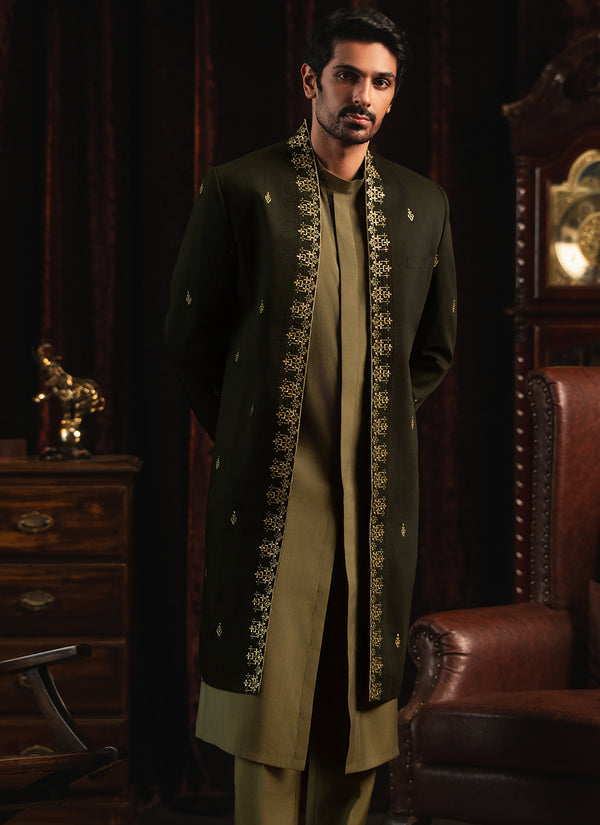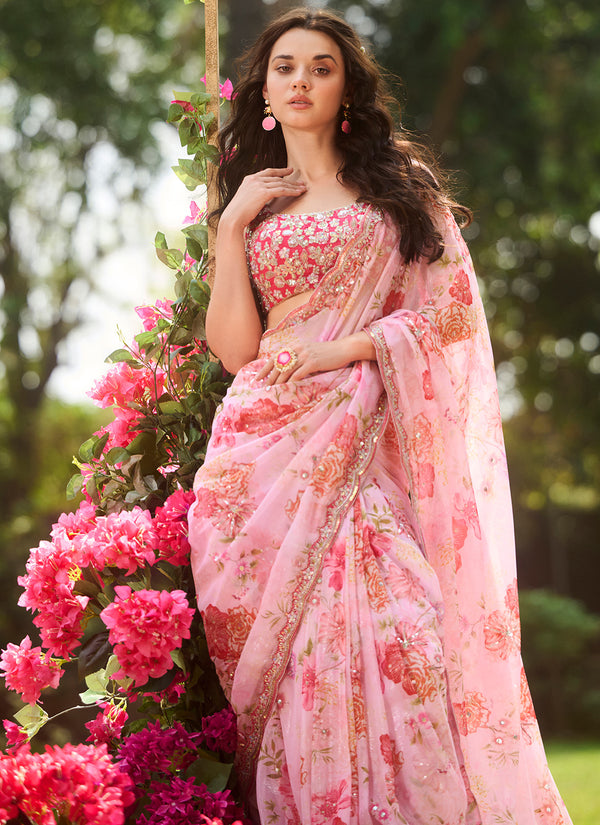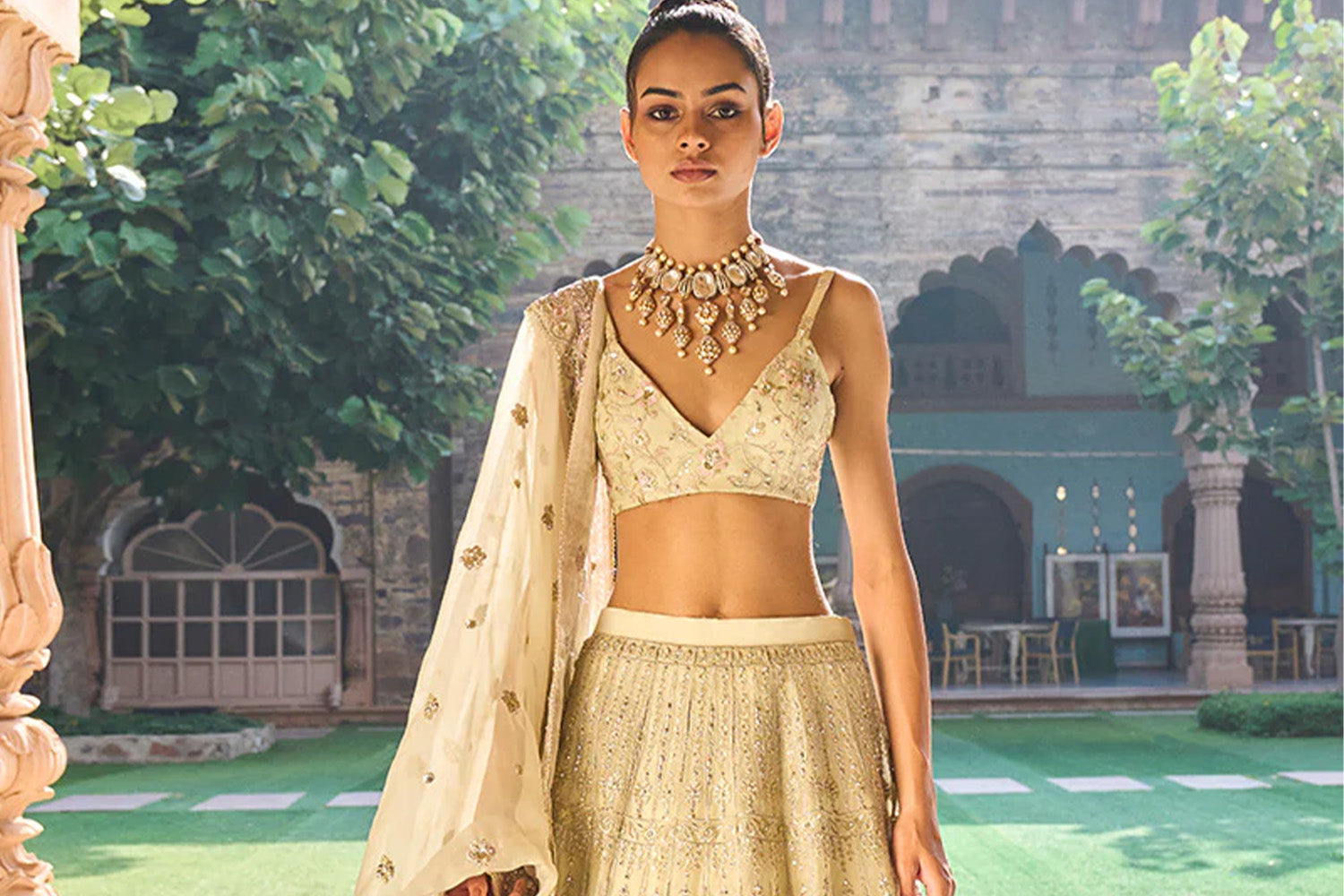
Saree or Lehenga for Wedding Guest: What Should I Wear?
Knowing and understanding fashion history and best styling practices can better tap into our cultural traditions and connect with family and roots. It also makes it easier for us to customize and modernize our outfits, so they can really showcase our styles and make us feel bold and confident.
Lashkaraa is here to help you get started. Not only do we carry an expansive inventory of traditional Indian clothes for the whole family, but we also help you style them for everyday wear and special occasions.
For the next wedding, choose from lehengas with a-line, flare, mermaid skirts, sweetheart, high-collar, or v-neck necklines, or style your sarees over the shoulder, draped from the hair, or loose at the elbows.
All these looks and more are covered in our round-up below:
Clothing at a Glance
Before deciding what to wear as a wedding guest, it’s essential to understand your top options and how they stand out from one another.
Here’s a look at two classic wedding options: the saree and the lehenga.
Saree
Sarees are single pieces of fabric, typically several meters in length. Often, they’re styled like a robe — cinched at the waist with the excess material draped over the shoulder. It can also be cinched at the waist or worn in a pant style, just to name a few draping options.
Typically, sarees have a choli, or blouse, and petticoat below. They may expose the midriff or cover it entirely depending on the weather or the occasion. You can choose the particular style to be comfortable for weddings in different weather or formality levels.
Sarees can either be draped by the individual or be purchased in a pre-pleated form to make dressing easier.
Lehenga
Lehengas are one of the most graceful outfits in any wardrobe. They can be used as daily wear but are often associated with more special events and occasions. This includes weddings, where brides and honored guests often wear lehengas.
Lehengas are made up of three separate parts. The lehenga refers to the skirts, which can be found in various styles like flared, a-line, or mermaid.
The choli is the blouse, which can also be found under sarees. Cholis tend to be crop tops but can have different sleeve and neckline designs to best fit your style, from v-necks to sweethearts.
Lastly is the dupatta, a type of scarf or shawl you’ll style over the lehenga at the shoulders, head, or hair. Dupattas are often crafted with foil borders, beaded patterns, or floral designs, which can draw out the embellishments on the lehenga or be used as inspiration for matching jewelry and accessories.
What Should I Wear to a Wedding?
Sarees and lehengas are formal wear that you can pair with chandelier earrings, sparkling high-heels, or bejeweled rings, so which is the better pick for a wedding celebration?
The short answer is that both outfits are appropriate. Due to their luxury materials, hand-crafted embellishments, and wide range of pattern options, both lehengas and sarees are ideal for wedding wardrobes.
That said, there are a few things you’ll want to consider when picking between lehengas and sarees for the next wedding celebration.
We’ve included some of them below:
The Wedding Venue and Family Traditions
It’s important to remember that India is a vast country! Each region has different cultural expectations and practices, which can extend the clothing and outfits you wear for special events.
If you are in the bridal party, the bride may request a specific style or request everyone match in the same traditional garment. If you are not in the bridal party, you might want to ensure you aren’t accidentally wearing a matching outfit. Refrain from contacting the bride and groom who have enough on their plates. Instead, reach out to the bride’s family or bridal party if you are concerned about this faux pas.
For those attending their first Indian wedding, avoiding the color red is a good practice. Red carries special significance in Indian cultures and is typically worn by the bride the same way white is worn by brides in the Western world.
If you’re unsure about the best practices for a specific wedding or event, consider reaching out to the family or other guests attending the celebration so you can style your look appropriately and focus on having a great time. Some Indian brides may choose to wear white, in which case you will likely not want to opt for garments in that hue.
How Traditional Is the Ceremony?
Lehengas and sarees are both appropriate for wedding celebrations because they can be dressed more modestly or casually, and they’re easy to enhance with either bright or subtle jewelry and accessories.
Still, it’s a smart idea to look further into how traditional the wedding will be. This will help you to determine what undergarments are most fitting for your outfits and the best ways to drape your saree, for instance.
Lehengas come with a shawl, or dupatta, which you can style in different ways to add an element of modesty to the outfit if the occasion calls for it. In this case, you can drape your lehenga from the hair over the shoulders or the face.
If you’re unsure about how formal the ceremony might be, consult the invitation or reach out to a bridal party member to ensure you’re dressing respectfully for the event.
How Formal Is the Wedding?
Indian weddings tend to be grand affairs with lots of bright colors and accessories, but you still want to consult the individual to determine the dress code. Specifically, look at the bride and groom’s requested level of formality.
Lehengas tend to be a little more elevated and formal, depending on how you dress them, but sarees can be taken up a notch with the right accessories, too.
Just look at formal options like the runway-ready Black and Dusty Mint Velvet Saree bursting with golden embellishments along the hem and edges. This hand-checked style perfectly balances the weighty richness of the velvet with the soft, flowy movement of the net material. A cascade of golden embroidery bursts from the dark background to give the outfit a feeling of grace and motion.
What Accessories Are You Wearing?
Indian outfits are known for being bold and unique, and one of the best ways to achieve that is through accessories and jewelry. Of course, you want to make sure you’re picking out the best accessories to fit the outfit, both in color and embellishments.
Many lehengas and sarees are adorned with embellishments, including traditional mirror work, beadwork, and metallic thread embroidery known as zari.
Consider matching the metals. For example, if your dress has gold detailing, opt for a gold nose ring or handcrafted Sonakshi Choker Necklace Set.
Draping Styles
How you drape and fold your saree or style your dupatta can help you show off the outfit's patterns and embellishments. If you want to keep the shoulder drape tight, it’s best to do so with more abstract and organic patterns that can be folded together.
A wider drape will allow you to show off intricate patterns, like sequin geometric or pattern designs since the fabric's surface will remain flush against the body.
Hair Styles
Another essential factor to consider is how you’re styling your hair. This is particularly true if you’re looking to wear a lehenga, as many dupatta styling techniques can come from the head or the hair.
An elevated bun or chignon is the perfect place to pin your dupatta to drape it over the face. Or you can let your dupatta flow loosely over a large side braid or soft curls pinned in place with pearl barrettes and fresh flowers.
For best results, you want to use lighter and softer fabrics that won’t pull on the hair or dislodge it from the elegant style. When you consider your entire outfit, you’ll be able to pick out the best accessories and plan the best hair and makeup looks for a complete wedding guest style that simply cannot be beaten.
What Is Your Personal Style?
One of the things you want to consider when picking out the perfect wedding guest outfit is your own style. You can even look to popular television shows for inspiration!
You have tons of options; start with your favorite colors and styles to narrow down your pick, including the following:
Red and Pink Printed Satin Lehenga
Maybe you like a Red and Pink Printed Satin Lehenga that features an embellished border along the hem and repeating Chevron patterns in shades of red and white. A nature-inspired pattern of florals in reds, pinks, and whites adorns the base of the lehenga, and soft golden detailing is interwoven throughout.
Icy Blue Embroidered Net Lehenga
More subtle lehenga style options may include an Icy Blue Embroidered Net Lehenga streaked through with foil embellishments. The gold and silver detailing allow for a wide range of coordinating jewelry too.
The layers of netting and embellishments overlay and criss-cross one another and combine with the color to create the movement of snow on a chilly winter day, making this a style fit for a snow queen.
Light Blue Multicolor Tie Dye Saree
You also have many choices for wedding-ready sarees, like a Light Blue Multicolor Tie Dye Saree that will keep you cool and comfortable and comes accented by golden tilla embroidery.
It bursts with bright blue from below the pattern of orange, blue, and white, and the ruffling of the material adds texture and depth to the outfit. A subtle gold pattern lines the arm and gives the hem a touch of eye-catching detail.
Conclusion
Weddings are beautiful opportunities to show off your style, from unique necklines and hemlines to handcrafted floral embroidery work and feather-light stonework design. And it all starts with the next saree or lehenga.
When deciding on the best option to fit your style and the specific celebration, you want to consider the family’s traditions, which ceremony you’re attending, and how formal the event may be. You also want to account for the accessories you’re wearing and how you’ll style your hair, as dupattas are often pinned to the hair.
When you’re ready to find the perfect lehenga or saree for the next celebration, look no further than Lashkaraa.
We carry a growing collection of special occasion events for the whole family, and we make it easy to connect with the traditions of home using the fabrics, styles, and accessories you like best. We’re even here to help you fashion them, so you can achieve those looks you love every time.
Sources

